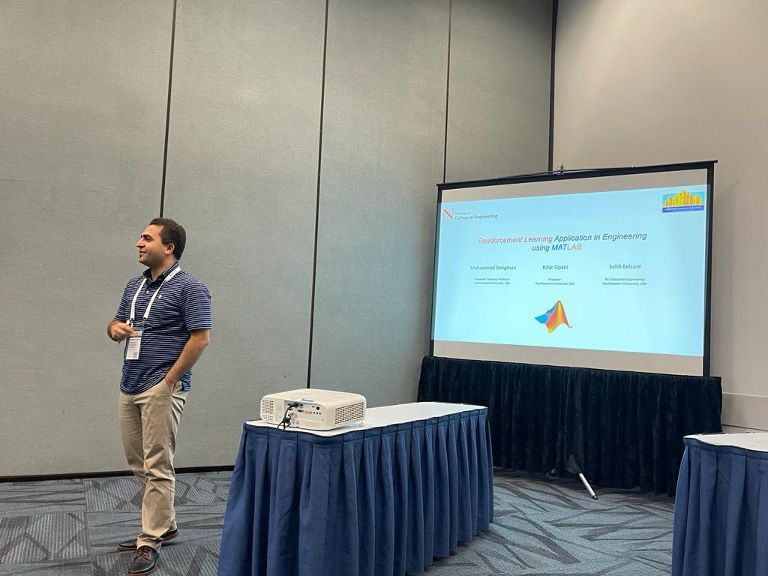Northeastern University Rolls Out Reinforcement Learning with MATLAB and Simulink
Machine learning is becoming increasingly crucial to industrial and mechanical engineering. Northeastern University is using MATLAB and Simulink to teach engineering students the reinforcement learning skills they need to solve the problems of the future.
Key Outcomes
- Reinforcement learning made more accessible to engineering students
- Time saved using Reinforcement Learning Toolbox to implement algorithms when compared to manual coding
- Hands-on experience obtained through realistic environment models in MATLAB and Simulink
With the industrial world becoming increasingly digitized, engineering courses need to prepare students with in-demand skills. Northeastern University’s Department of Mechanical & Industrial Engineering prepares students to solve real-world problems in a variety of different domains, including healthcare, finance, robotics, and energy systems. In parallel, students must also have the necessary programming and coding skills in key concepts. One such concept is the ever-growing domain of reinforcement learning.
To make reinforcement learning more accessible, professors at Northeastern created teaching modules using MATLAB® and Simulink®, which are aligned with industrial and mechanical engineering applications. For students in STEM disciplines who have experience using MATLAB in their coursework, these modules provide an introduction to crucial reinforcement learning techniques that they will likely use in their professional careers.
The modules—which include students completing Reinforcement Learning Onramp, Deep Learning Onramp, and MATLAB Onramp—consist of four stages. In the first stage, students use MATLAB to solve a reinforcement learning problem before using Reinforcement Learning Toolbox™ to solve the same problem. This allows them to compare results from manual coding with those using the toolbox. In the second stage, they custom-build environments in MATLAB, as well as create and train interactive agents using Reinforcement Learning Designer app. In stage three, they integrate Simulink and Reinforcement Learning Designer app to simulate environments with deep learning models. Finally, in stage four, students use the same tools to create more advanced applications, including robotics simulation and portfolio management.
